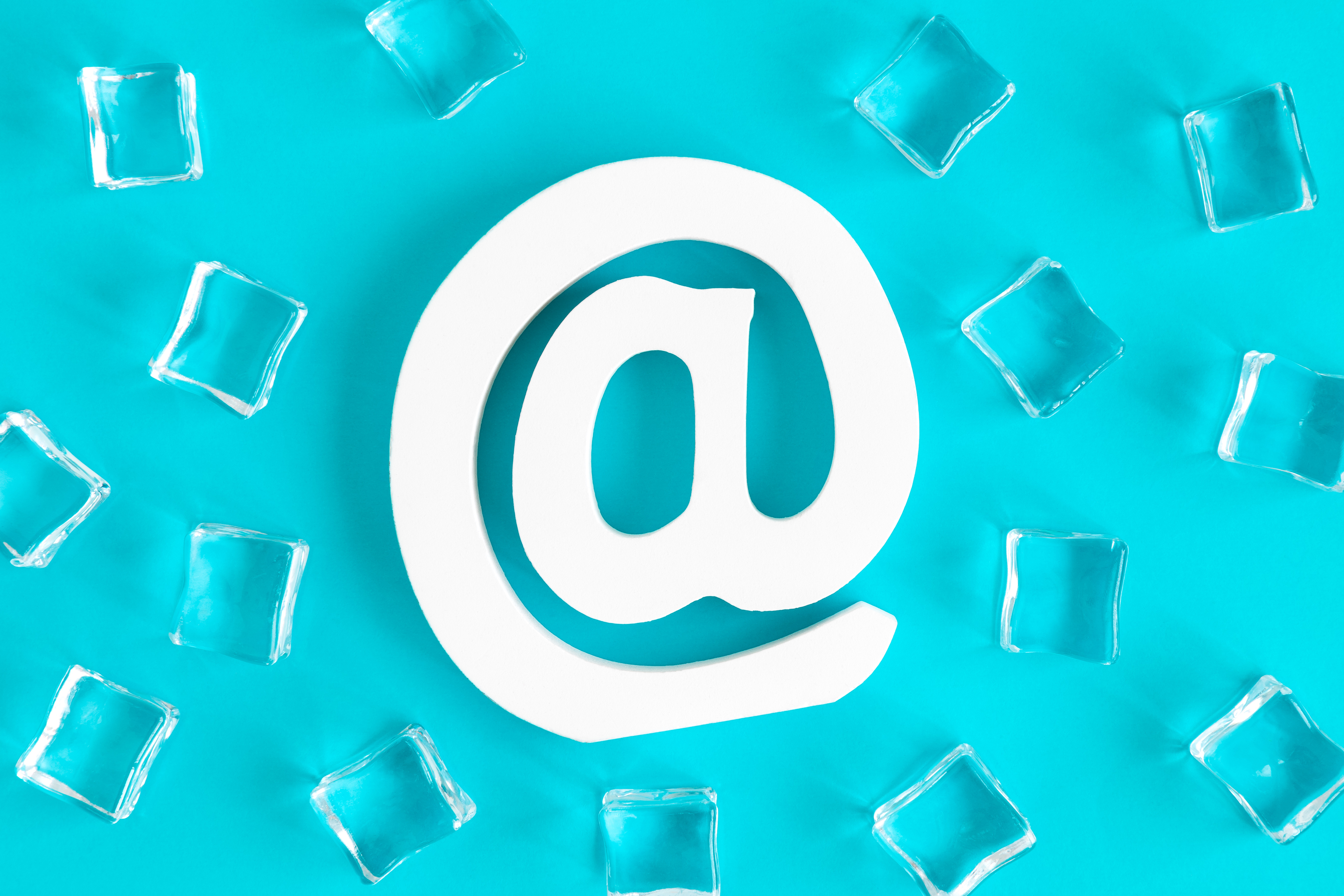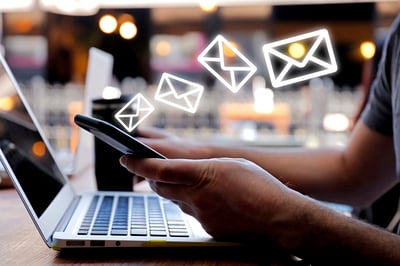October 30, 2019
 by Kejda Gjermani / October 30, 2019
by Kejda Gjermani / October 30, 2019

When you’re putting together a cold email campaign, you’re writing to a collective list.
This list is ideally people who have certain qualifying criteria in common along with a specific problem you can solve, but on the receiving end, you’re being read by a single person every time. A stranger.
And here’s the thing. Strangers don’t care about you. They only care about themselves. Because they have their own problems to worry about. They’re also naturally skeptical of strangers’ (you) ability or willingness to help them with their problems. What they do know for sure is that anyone and anything claiming to be of value to them does not come free.
It comes with the immediate cost of their attention, an increasingly scarce commodity in the lives of anyone with pockets deep enough to afford anything you’re selling. And with the ultimate looming cash cost.
So of would-be costs to any proffered assistance, they are keenly aware. Of how much they want whatever it is you’re pitching, their default preconception is, likely not at all. Especially since yours is likely not the first or fifth pitch that has popped into their inbox that day.
That’s the default preconception your prospects are viewing your cold email with.
To turn that preconception around and open them up to the possibility that maybe you have something they need, before you dazzle them with the virtues of your product or service, you need to first make them feel understood. Your prospects are busy, and you’re a stranger trying to sell them something. They won’t even let their guard down to listen to your pitch unless you come off as polite, well-mannered, and as someone who’s done their homework.
So here’s where having a high quality list of prospects comes into play. How to source one is beyond the scope of this guide (although you can learn some key outbound sales outreach strategies that will ultimately benefit you), but remember that quality trumps quantity. Contacts who aren’t good prospects are worse than useless.
By lowering your response rate or increasing your spam complaint rate because your message isn’t attuned to them, they lower your overall deliverability and your ability to reach good prospects in the future. A good list means certain key things in common, typically within the same line of work, but also stage of company growth, and most importantly, acute pain points. If all your prospects have these in common, you can think of a real person on the other end when you write copy, and make your copy resonate with that person.
Let’s suppose you offer review management software. A good list would be dentists with poor ratings on public directories. If this is your list, you can write copy that makes sense for them because you can assume that they’re bothered by this fact and probably don’t know what to do about it (since they haven’t done anything about it that has turned the situation around).
But if your list is just dentists, you cannot assume that their rating is low and that they have this pain point. Or if your list is pizza places + dentists + lawyers with poor ratings, you cannot reference particulars about their work that would make them feel understood.
So segment and clean up your list as best as you can to ensure you have a cohesive cohort of prospects in your hand, otherwise the whole effort will backfire.
Next, gather as many data points about your prospects as possible.
Gone are the days when you could get someone’s attention by just plastering their first name and company name into the copy of your subject line or email body via merge tags. Now everyone does it, and worse than no personalization at all is sloppy personalization, making it painfully obvious to the recipient that they are on a mass list. Sloppy personalization insults the recipient’s intelligence by pretending you’re sending them an individual, personalized email, when actually it’s a canned message you send en masse.
Assuming your copy is strong to begin with (because you understand your prospect avatar), then the more you personalize will make your message more relevant, making the recipient likely to respond as a courtesy for you “doing your homework”.
| Related: Don't allow yourself to make silly cold email mistakes. Learn how to cut through the noise in our guide. |
So don’t skimp on the research. Depending on the size of the list, this process might be best outsourced to a virtual assistant.
When done right, it needs to follow a spreadsheet format: first name, last name, company name, website, vertical, sub-vertical (sometimes), growth stage, city, state, and so on. Each of these and other fields can and should be dynamically inserted into your copy to be personalized to your prospect.
But these days, even that is often not enough.
If your targets are high value, consider doing manual research on each of them. This could be a free-form entry on the spreadsheet, such as your favorite segment in a podcast by that prospect (which proves you really listened to it and care about who they are). Perhaps it’s a mention of their company in the news or congratulations on a case their law firm just won. It could be anything, really, depending on the list and context. The point is to prove that you care, that you understand them, and aren’t selfishly email blasting them through a mass-produced campaign.
This tidbit can be inserted as a post script after the body of your email or somehow weaved into the intro. Going through this concerted effort will reward you with an extra boost in response rate, and you will impress prospects who have likely been jaded by other email campaigns.
This is one step below the effort required to put together a BASHO email, an artisanally crafted, organically sourced email written by hand after as much research on the company and social media stalking on the actual prospect as a BDR can weave together into an email that is meant to knock the recipient’s socks off without creeping them out.
In a universe where time, attention, and resources are infinite, every cold email and follow-up emails would be BASHOs. But in the universe we live in, such craft cannot be scaled to the volumes necessary to gain business development traction. Thus, the BASHO email is reserved only for your dream 100 prospects.
For everyone below your dream 100 prospects, the trick is both volume and personalization, which in practice means a clean, cohesive list, and research to populate enough merge tags beyond name and company. By this, you make it sound like you’re talking to that prospect – and that prospect only – plus a purely unique postscript or intro sentence that leaves no doubt about it.
Assuming you’ve got a research and production workflow that yields consistent copy along these lines, at this degree of personalization, don’t forget the medium in which you’re writing. Your cold email sequence is not a long-form sales letter. It’s a series of light-touch communications.
Keep your copy light, breezy, and short, or you’ll lose your prospects’ attention. Most importantly, you’ll lose their respect. These days, no one has time to write (let alone read) long emails. If you do, that signals something unflattering about you and the value of your time.
Break up your message into follow-ups that will be spaced out over weeks or months. No need to cram everything in on your first try. Break up the value proposition into various angles that can be delivered as separate light-touch emails. The same holds true for any implicit objection handling.
It takes on average seven instances of exposure to a brand through advertising for the targets to become aware of it and start mentally engaging with the messages. The same holds true for your cold emails. Silence doesn’t necessarily mean lack of interest. It can mean “I’m busy” or “let’s see what you’ll say next.” Make it easy and prominent for the prospects to unsubscribe so that silence without unsubscription can be interpreted as charitably as you please.
Offer value and stay classy at every touch point and you’ll be fine. Here the bird that follows up 9-12 times minimum, gets the worm. Your cold emailing competitors typically give up after the 3rd follow up attempt, so you can see why the tails are so fat for the persistent cold emailers.
So much for the art. Now onto the science.
Repurpose your knowledge about personalization in copy for that of your website, another stage in your cold email campaign.
If the call to action (CTA) of your emails is fulfilled on your website (e.g. reading an article or blog post or filling out a form or interacting with a chatbot), then personalize the experience off-inbox too.
| TIP: Chatbots and live chat solutions are one of the hottest personalization trends around. See the difference between live chat vs. chatbots and make an informed decision for yourself about which will impact your personalization efforts more. |
If you have connected a Google Sheet with your email outreach tool, or have uploaded a CSV file instead, this same source of the info used to populate the merge tags for every prospect within your email can also be connected to other SaaS tools.
It then will take the same personalization data and use it to create:
|
Your website as the host of any chatbot, copy, or images that live there is not the ultimate frontier for wowing your prospects. If they click through the link you include in your email to learn more and then are greeted by an experience perfectly personalized to them, chances are you’ve got their attention. But chances also are that you had a bit of their attention in the first place if they were compelled to click your link.
But what about prospects who opened your email without clicking or replying? Maybe they were so distracted they deleted it right away because there were 357 other unread emails vying for their attention. Or maybe they meant to get back to it later but never got around to it.
You always have a chance to reclaim their attention at the next round of follow-ups, but because you can’t follow up an at obnoxious rate (ideally follow-ups start dense and then spread out thin over time), your sales cycle gets longer and longer simply because you must wait for the next opportunity to email that prospect. And time equals money.
So, what can you do to shorten the communication cycle? Simple. Boost your emails with retargeting ads.
If you load a retargeting pixel in your email, you can track who opened it, and only show targeted advertising to those who did – even if they never clicked your links.
The ads can be LinkedIn, but also Facebook. If the recipient has Facebook open on a tab on their computer while checking their work email, that’s all the pixel needs to fire off a match. Here’s the amazing thing. With Facebook, using tools to personalize your cold email efforts, you can run 1:1 personalized ads with the prospect’s logo, website screenshot, and any other merge tags you used in your emails.
If that won’t get their attention, nothing will. Few people are using this tactic, so a “how did you do it” query is a great conversation starter.
A word of caution about retargeting scripts: lay off them in your first or second emails as ISP spam filters frown upon them, and a script-heavy initial email might end up in a prospect’s spam folder. Wait until you send subsequent follow-up emails to try this tactic.
If you’ve done all of the above, you’ve already done more than most pro cold email marketers out there. The only other way to stand out is by following up on alternative channels. Follow up your email with a LinkedIn connection request, or even a quick follow on Twitter for a more social media-friendly encounter.
There’s a fine line between being impressively persistent and a pest, so your mileage might vary here. As always, lead with offering value, and when in doubt, revert to your sense of good manners. If you do all of this persistently, you’ll stand out in your prospects’ inboxes and get attention, responses, and – if what you’re offering is good – serious business.
Find the best email marketing software on the market to help you craft the most unbeatable cold email strategy around. See all available solutions for your needs on G2.
Kejda Gjermani runs Predictive Intent Marketing, a boutique marketing agency in Manhattan specializing in B2B and professional services. She is a martech junkie who enjoys setting up and growth hacking her clients' marketing funnels and strongly believes one-on-one personalization is the future of marketing.
A fully loaded inbound marketing engagement can cost upwards of $100,000 per year for all the...
 by Andrea Moxham
by Andrea Moxham
An inbound marketing strategy is holistic, data-driven, and aims to attract the right...
 by Jen Spencer
by Jen Spencer
Email is an integral part of today’s culture, both at work and at home.
 by Thomas Yuan
by Thomas Yuan
A fully loaded inbound marketing engagement can cost upwards of $100,000 per year for all the...
 by Andrea Moxham
by Andrea Moxham
An inbound marketing strategy is holistic, data-driven, and aims to attract the right...
 by Jen Spencer
by Jen Spencer


